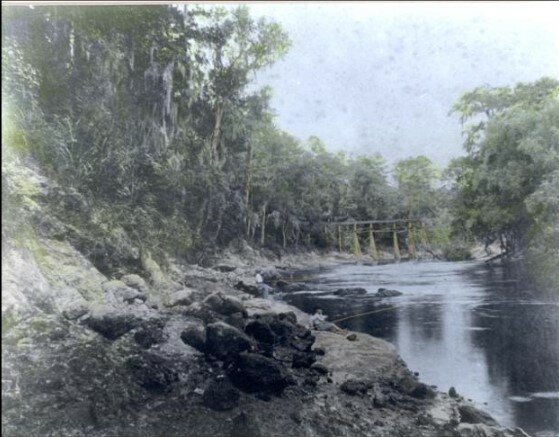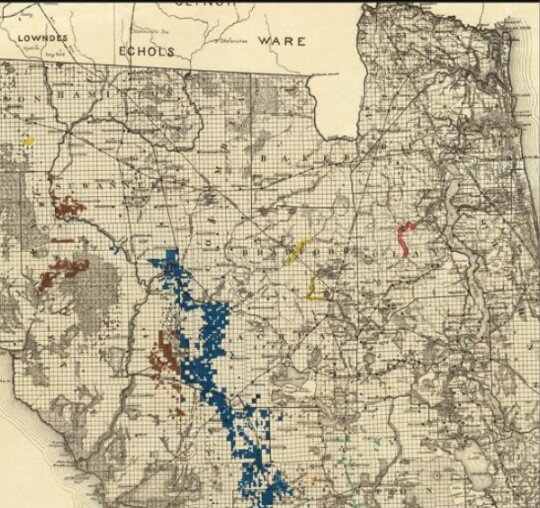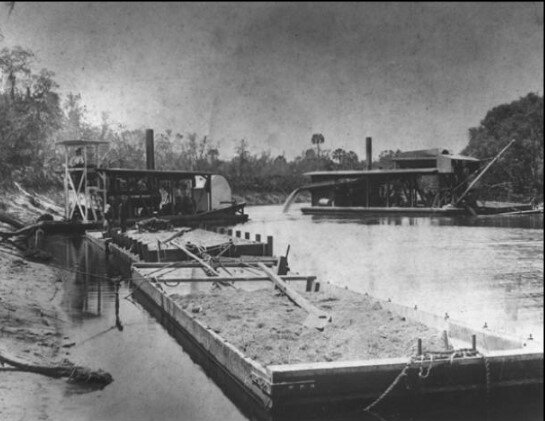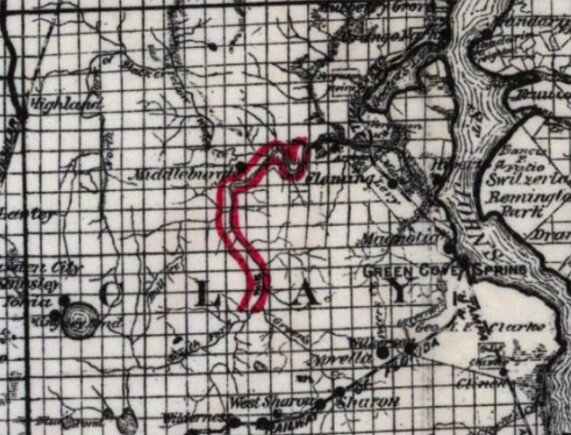Celebrate Clay County History: The Precedent Setting Black River Phosphate Company
CLAY COUNTY – The Industrial Revolution led to many changes in agriculture. With machines now doing the bulk of the hard work, farmers produced crops on a grander scale. As fertile farmland became …
This item is available in full to subscribers.
Attention subscribers
To continue reading, you will need to either log in to your subscriber account, or purchase a new subscription.
If you are a current print subscriber, you can set up a free website account and connect your subscription to it by clicking here.
If you are a digital subscriber with an active, online-only subscription then you already have an account here. Just reset your password if you've not yet logged in to your account on this new site.
Otherwise, click here to view your options for subscribing.
Please log in to continueDon't have an ID?Print subscribersIf you're a print subscriber, but do not yet have an online account, click here to create one. Non-subscribersClick here to see your options for subscribing. Single day passYou also have the option of purchasing 24 hours of access, for $1.00. Click here to purchase a single day pass. |
Celebrate Clay County History: The Precedent Setting Black River Phosphate Company
CLAY COUNTY – The Industrial Revolution led to many changes in agriculture. With machines now doing the bulk of the hard work, farmers produced crops on a grander scale. As fertile farmland became scarce after the Civil War, farmers needed a way to increase the yield per acre. Fertilizer was one of the ways to do that, and it resulted in a high demand for both fertilizers and pesticides. One of those fertilizers was phosphate. The 1890s brought the discovery of large phosphate deposits in Florida and industrial-scale mining operations.
Clay County had a phosphate source, which was under the dark, tannic waters of Black Creek. Accumulated eons ago, Florida’s phosphate deposits are believed to have originated in a few different ways. In a process called precipitation, some of the phosphate formed when conditions in the seawater caused dissolved phosphorus to solidify. As the solids settled to the bottom of the shallow coastal waters, they became part of the sedimentary layers that eventually formed the sediment that is mined today. Sea life excrement and remains also played a large part in creating the deposits. Bones, teeth, and other fossilized animal remains all contributed to the formation. Phosphate was also reported at other locations in Alachua and Duval counties. The largest deposits were discovered in Polk, Hillsborough, Manatee and DeSoto counties.
The phosphate at Black Creek was found to be part of the Hawthorne formation and more of a phosphate marl, which is pebbles mixed with lots of silica and clay. The quality of the phosphate was too low for export to Europe, so the mineral was distributed in America.
Investors at that time were interested in ventures that extracted resources from Florida’s water and land. One such prospect was the Black River Phosphate Company based in Jacksonville. Capitalized at $200,000, it was the only phosphate mining company in Clay County. Between 1891 and 1895, Black River mined approximately 45tons a day of pebble phosphate from Black Creek.
Black River Phosphate Company used barges, hydraulics, and dredges to mine the creek. Owning the acreage on both sides of the waterway, they built wharves on each bank to support their operation while pumps and barges operated in the middle. The first pumps used to mine the pebbles were installed in dredge boats in the early 1890s. Black River Phosphate Company got theirs in 1892. The 8-inch pump, which ran on steam engines, produced an average daily yield of 35-45 tons of pebble each day.
Dredging went on for 12 hours a day and was hazardous to workers. The inferno-like summer climate of Florida intensified the already tough working conditions. One can imagine the steam and boilers amping up the already stifling heat. Drowning, gators, and snakes were severe issues for workers, too, as were mosquito-borne diseases. Another hazard was continued exposure to low radioactivity levels, which were emitted as trace elements of uranium from the phosphate marl. Uranium is highly carcinogenic, and inhalation of phosphate dust poses additional dangers to the laborers.
Everything was going smoothly until the State of Florida sued Black River Phosphate (BRP). The 1893 Florida Supreme Court opinion set a nationwide precedent in the area of riparian owners’ rights. (Riparian refers to any property relating to or situated on the banks of a river.) The precedent set in State v. Black River Phosphate, 13 So. 640 (Fla. 1893) is still being cited and followed. The Court’s task was to determine the nature of the ownership of the state of Florida, which had to land under navigable waterways. BRP was taking phosphate from the bed of Black Creek, which was both tidal and navigable. BRP’s claim to the land was based on The Riparian Act of 1856, which granted “title” to riparian owners, giving them the right to build wharves into the state’s waters. BRP argued that this “right” applied to the minerals under their land and into the creek bed.
The Court thought otherwise.
The Court stated the Riparian Act must be strictly construed in favor of the state or public, and they held that nothing passed to the riparian owners that weren’t denoted in clear and special words. The purpose of the act was found in the phrase “full right and privilege to build wharves” and no other rights. In other words, BRP could build wharves and docks ‘til the cows came home, but until the state gave them a permit to mine and they paid the $1 per ton fee the state demanded, there would be no further mining of the underwater land.
The Court concluded that the navigable waters of the state and the land beneath them are the property of the state and held for the use and enjoyment of all the people of the state. Clay County contributed one of the greatest riparian rights cases to American jurisprudence.
Today, 90% of phosphate production is used for fertilizer to produce food and fiber, and 5% is used for livestock feed supplements, and the other 5% is used for vitamins, soft drinks, toothpaste, film, light bulbs, bone china, flame-resistant fabrics and optical glass. Florida is the world leader in phosphate rock production, annually producing 75% of the U.S. and 25% of the world supply.
Interested in this topic or any other topic related to Clay County history? Visit the Clay County Archives located inside the Old Jail at 21 Gratio Place in Green Cove Springs. The archives is open 8 a.m.-5 p.m., Monday-Friday. Call ahead (904) 371-0027 or visit clayclerk.com.
Sources: Clay County Archives & Florida Industrial and Phosphate Research Institute, https://fipr.floridapoly.edu/.















